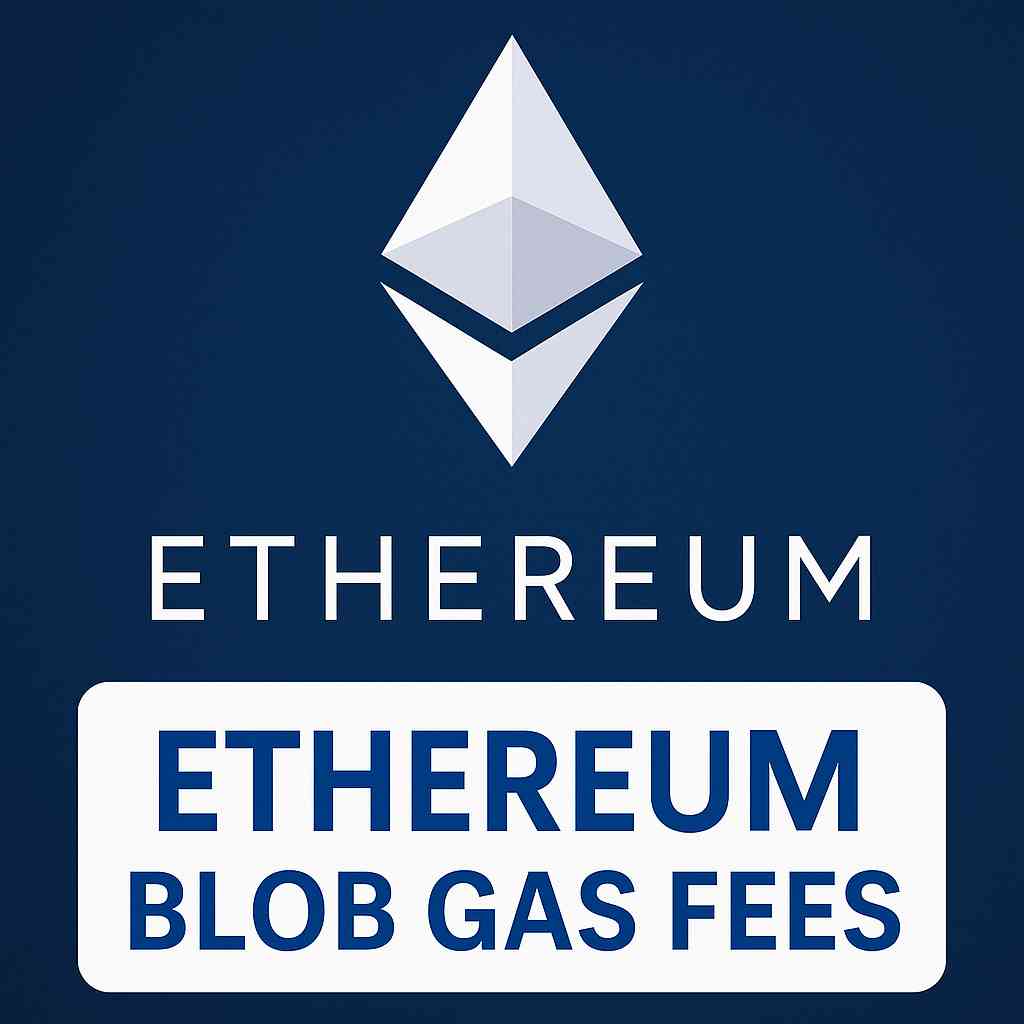Ethereum Blob Gas Fees: A Deep Dive into Ethereum’s Scalable Future, As Ethereum continues to evolve into a more scalable and efficient blockchain, the introduction of Ethereum blob gas fees has become a pivotal innovation. Designed to address data availability, storage efficiency, and scalability—especially in the context of rollups and proto-danksharding—blob gas is revolutionizing how Ethereum handles off-chain data.
In this in-depth guide, we will explore what blob gas is, how it works, why it matters for Ethereum’s future, and what investors, developers, and users need to know. We will also connect this innovation with other major upgrades such as Proto-Danksharding and EIP-4844.
What Are Ethereum Blob Gas Fees?
Blob gas fees refer to the cost associated with storing temporary data called “blobs” on the Ethereum blockchain. These blobs are a new data format introduced through EIP-4844, also known as proto-danksharding, and are designed to store large chunks of data outside the standard Ethereum calldata mechanism.
Blobs differ from traditional transaction data in that they
- Do not require permanent storage on the Ethereum chain
- Are pruned automatically after a set period (approximately 30 days)
- They arecheaper than data due to their ephemeral nature
The cost to include a blob in a transaction is measured using a special unit called blob gas, which is independent from regular Ethereum gas fees. This separation allows Ethereum to manage blob data scalability without affecting standard on-chain transactions.
Why Are Ethereum Blob Gas Fees Important?
The primary advantage of blob gas lies in enabling scalable and cost-efficient Layer-2 rollups. These rollups depend heavily on off-chain data availability. By using blobs, rollups can store their data affordably and efficiently without bloating Ethereum’s state.
Key benefits include
- Lower Layer-2 transaction fees
- Improved data availability for optimistic and zk-rollups
- Decoupling of computation and data storage costs
- Encouragement of real-world applications like RWA Tokenization
Blob Gas vs. Traditional Gas: What’s the Difference?
| Feature | Traditional Ethereum Gas | Blob Gas |
|---|---|---|
| Purpose | Executes smart contracts | Stores ephemeral blob data |
| Storage | Permanent | Temporary (30 days) |
| Pricing Mechanism | Congestion-based | Separate blob pricing curve |
| Impact on Layer 2 | High cost for data | Lower cost for blobs |
This distinction is crucial for reducing costs in applications like yield farming and DeFi protocols, which need frequent and large data transfers.
Connection with Proto-Danksharding & EIP-4844
The Ethereum blob gas fee model is a stepping stone toward full danksharding, Ethereum’s long-term scalability solution. Proto-danksharding, implemented through EIP-4844, introduced blobs and blob gas as a testing ground.
This has the following implications:
- Testing scalability concepts before full sharding
- Enabling high-throughput apps like DePIN, gaming, and social dApps
- Supporting high-growth altcoin projects that build on rollups
Economic Model: How Blob Gas Prices Are Determined
Blob gas fees are governed by a base fee model, similar to Ethereum’s EIP-1559 for standard gas. Here’s how it works:
- Ethereum targets a fixed number of blobs per block (e.g., 3 blobs)
- If demand exceeds this, the base fee for blob gas increases
- If underutilized, the base fee drops
This model ensures
- Predictable fee environment
- Efficient allocation of storage
- Sustainability of rollup economics
Impact on Layer-2 and Real-World Crypto Use Cases
Blob gas radically improves the economics for Layer-2 solutions like Optimism, Arbitrum, and zkSync. These platforms can post large proofs and state data using blobs, reducing user fees.
It also boosts innovations such as
- Real-world asset (RWA) tokenization
- NFT marketplaces (e.g., Solana vs Cardano marketplaces)
- AI-DeFi hybrid protocols
And supports explosive sectors like
Challenges and Limitations
Despite the benefits, there are still some concerns:
- Blob data is not accessible to smart contracts
- 30-day blob lifecycle could limit certain applications
- New fee volatility may confuse users unfamiliar with blob economics
Developers will need new tools and infrastructure to:
- Retrieve blob data off-chain
- Integrate blob usage into dApps
- Monitor and forecast blob gas fees
Future Outlook: What Comes After Blob Gas?
Blob gas is just the beginning. Ethereum is marching toward full danksharding, which will:
- Allow dozens of blobs per block
- Distribute data across validators more efficiently
- Fully support rollup-centric scalability
This evolution could make Ethereum:
- The de facto settlement layer for the internet
- A home for high-throughput applications
- A platform for institutional-grade tokenization
Conclusion
Ethereum blob gas fees mark a transformative moment in Ethereum’s roadmap. By providing low-cost, temporary data storage, blob gas fuels the expansion of rollups, supports RWA tokenization, and reduces Layer-2 costs—all while setting the foundation for danksharding.
For investors seeking the next 10x crypto projects or developers building cross-chain DeFi platforms, understanding blob gas is essential.
Stay updated on Ethereum’s evolution and explore the top altcoin projects poised to benefit from this new paradigm.
FAQs About Ethereum Blob Gas Fees
Q1. What is blob gas in Ethereum? Blob gas is a specialized fee model for storing ephemeral blob data, introduced in EIP-4844 as part of proto-danksharding.
Q2. How does blob gas help Layer-2 scalability? It reduces data posting costs for rollups, lowering transaction fees and enabling higher throughput.
Q3. Is blob gas different from regular gas fees? Yes. Blob gas is separate from regular gas and applies only to blob data.
Q4. Can smart contracts access blob data? No. Blob data is not directly accessible by smart contracts—it is only available off-chain.
Q5. What’s the future of biogas? It’s a stepping stone toward full danksharding, which will massively increase Ethereum’s scalability.
